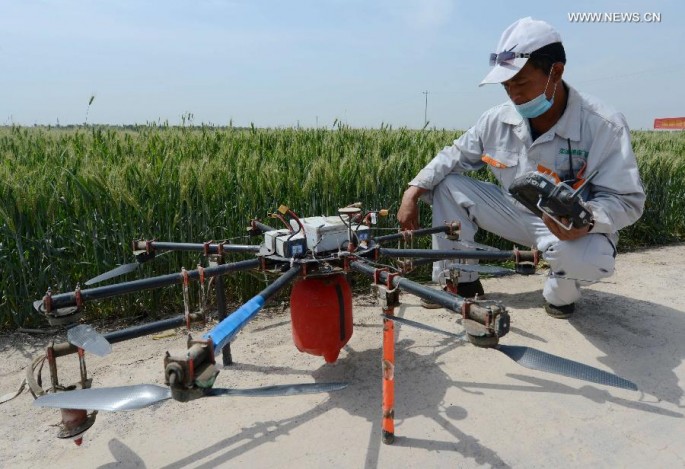As the Aviation Expo China 2015 comes to a close this weekend in Beijing, China’s thriving unmanned aircraft system (UAS) industry has been shoved into the spotlight, including revelations of lack of regulation and potential threats to national security, the Beijing-based Global Times newspaper reported on Monday.
This year marks the first time UAS were featured in its own section at the expo, prompting a great deal of attention from the media and expo visitors. According to an expo media officer, 12 of the 30 exhibitors received orders for more than 800 drones during the four-day exhibition.
One display in particular that received significant attention was that of the Aviation Industry Corporation of China (AVIC), which featured a model of Wing Loong I, a drone that was prominently featured in the Beijing military parade marking the end of World War II on Sept. 3.
Peter van Blyenburgh, president of UAS International, said that increasing awareness of drones by China's middle class and entrepreneurs has led to job creation in the industry.
"The largest quantity manufacturer in the world is in China but it's selling more outside of China than inside," he said, although cautioning that there is currently no official data regarding the drone industry in China.
But while China sees an increase of unmanned aircraft in civilian hands, it still lags far behind their international counterparts in products for industrial use, said Wang Haiyang, a UAS engineer.
This is reflected at the expo, where different companies were offering products with overlapping functions, Wang said.
According to exhibitors, their drones could be or have been used for agricultural, geo-information, surveillance, and law enforcement applications.
But while many exhibitors expressed confidence in their products, van Blyenburgh noted that China's strengths lie in "expensive toys and low-end professional drones." In addition, he noted that many of the drone manufacturers are unaware of their responsibilities and liabilities.
"They don't know the risks. If a private company gets into an accident, their insurance doesn't cover them as they are flying illegally," he said, adding that more than half of non-military drones are uninsured.
Several manufacturers are also reportedly producing drones that have not undergone strict safety checks, an anonymous industry insider told the Global Times.
"Some so-called drones may even be pieced together from components bought online. It is true that there are no industrial standards in China for drone manufacturers, but at least they can use other countries' standards as a reference," said the insider.
Foreign and Chinese experts also renewed their call at a forum during the expo for the urgent implementation of regulations focused on the drone industry to address social problems including the invasion of privacy and terror attacks.
"An average drone can carry up to one kilogram. It could be carrying a camera, but it could also be carrying TNT or sulfuric acid," an unnamed aviation expert was quoted by the Global Times. "Imagine what would happen if the drone flies over a crowd and drops its load."
Some industry experts also expressed the limitations of drone manufacturers in screening potential drone operators for criminal backgrounds.
"One cannot guarantee a product will not be used for ulterior purpose. It is the same if you are a knife-seller and somebody uses your knife to kill someone," Wang said. "There is nothing you can do."



























